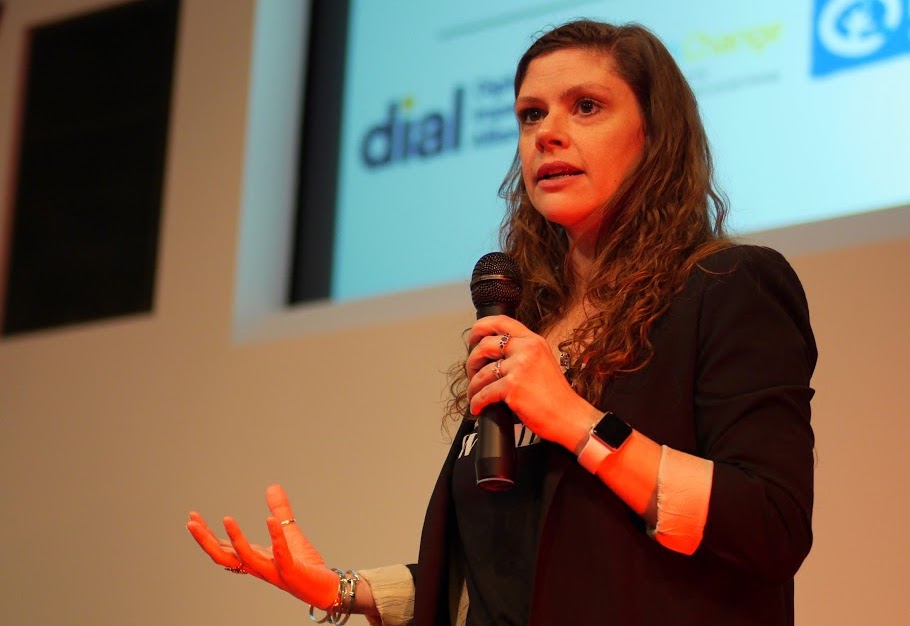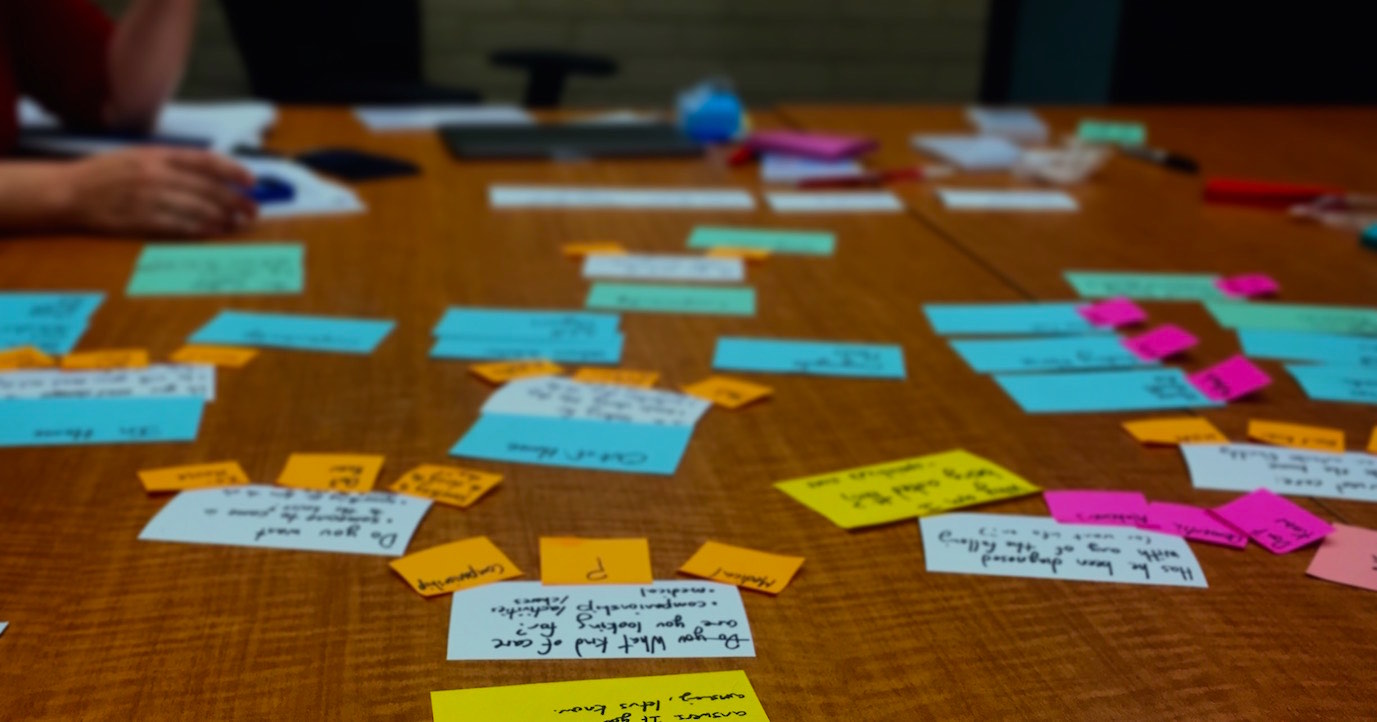What happened, part I: strategy fails
11
minute read
In September, we announced that SIMLab would be closing, some time in the Spring. So many people reached out to ask to connect with our fine people about possible jobs, talk about working together, and offer their sympathy and support. To all of you, and those who tweeted, emailed and messaged us, thank you.
To those who donated to support us and help us pay our bills, thank you, from the bottom of our hearts. Most of you are former staff members, some former clients and partners and one, amazing board member. For the whole team, but particularly for Kat and I, who are here until we turn out the lights, the way our community has shown up for us is helping to get us through a tough time.
Quite a few of those who emailed me were curious - other CEOs suffering the slings and arrows of life as a non-profit, anxious to hear which of them were fatal to our little enterprise; people working at the same intersection of practice and policy within institutions, fighting the same battles for funding; and even donors, interested to find out what had happened. I promised to tell you what happened. Last week, I presented a very short version of this post at DC’s Fail Festival. Here is the extended radio edit, in two parts (part II is here.).

I did everything I could, but not everything I might have.
It’s important to say, up front: as our CEO, I bear most of the responsibility for our closure.
I took risks, and they didn’t pay off. I made operational mistakes, and they cost me time and energy to recover. I didn’t know enough about how to fundraise and build donor relationships, particularly in the unfamiliar DC market. I am too eager to do the detailed work myself when I should work at a higher level. We were also unlucky. But the job of a CEO is to identify, plan for and build buffers against unexpected challenges, and I didn’t do that well enough. I’ve learned a lot from this. More in next week’s post, which is more operational in nature.
But. Here I want to focus on what was, perhaps, our biggest problem, and one I’m still grappling with: our strategy, messaging, and business model.
Our mission worked…
SIMLab’s mission was to help others use inclusive technology (accessible, affordable, locally-relevant tech) for social change work. We championed tech that excluded as few people as possible, and project design that went back and swept up those the technology missed. We deliberately avoided technocratic, easy solutions that would reach the burgeoning technology middle class - new entrants to the smartphone market, basic phone power users, people who had been trained and given hardware by NGOs.
To do this, we would help people to implement inclusive technology well, learn from that and share guides, tools and case studies publicly and as accessibly as possible. We would share and talk about what we learned and use that data and credibility try to influence policy and wider practice.
So far, so good - and in fact, we did all of these things. But our fundraising plan was not strong enough, for a number of reasons.
…but our fundraising plan did not
The plan was simple: consulting and partnership proposal writing would fund the implementation work. On the margins of that, we would begin the guides, tools and other knowledge products. They would be released, to fantastic acclaim, and donors would send emails containing restrained praise and invitations to discuss. These would turn, inevitably, into funding for the knowledge products, which would support more work, and our policy and advocacy ambitions. Over time, some of those relationships would evolve into funding for our core mission - the holy grail for any non-profit.
I was making two faulty assumptions here: one, that credibility would lead magically to business. I imagined that like other groups I admired, we’d just have to visibly know our stuff and people would beat a path to our door. I had no idea how hard other groups like ours are having to hustle; how much leader profiles and networks are leveraged to bring in money; the institutional work they have to take on to keep passion projects going; the compromises and the endless chasing after grants. No-one funded our learning products. No-one wants to pay people to think.
And two: that the people who read and liked resources like the Frameworks would be able to use them in their work. I thought all we had to do was point out, helpfully, which way lead to a better world and everyone would excitedly start commissioning evaluations and context analysis missions, and investing in research phases in tech projects. The world does not work that way. It is possible to know that there are gaps in practice in your organization and not prioritize fixing them over the many, many other things there are to do. And many, many people know that these practice problems exist, and are prevented from fixing them by systemic challenges like the chronic underfunding of NGO infrastructure.
 An abandoned desk. Photo credit: Max Pixel http://maxpixel.freegreatpicture.com/Hall-Desk-Pforphoto-Lost-Places-Columnar-Office-2963769
An abandoned desk. Photo credit: Max Pixel http://maxpixel.freegreatpicture.com/Hall-Desk-Pforphoto-Lost-Places-Columnar-Office-2963769
One more problem, maybe two: we were challenging ICT4D fundraising orthodoxy. The kind of ICT4D I was proposing wasn’t sexy or exponentially scalable. It was updated 1980s participatory development - not very ‘innovative’, although it made development nerds who know who Robert Chambers is very happy. It included many focus group discussions and granular focus on context. it required design phases and adaptive management. This made it expensive and uncertain to donors. Our focus on inclusive tech already positioned us to work in the toughest tech environments, using distinctly unsexy innovations like radio and, yes, text messaging. Not exactly the easiest thing to fundraise for. And our emphasis on evidence could ultimately uncover massive failings in projects backed and carried out by powerful people with vested interests in not identifying that this stuff wasn’t working. So our mission was not only unfashionable, but potentially threatening.
There were other things that may have contributed to our fundraising fails. Our messaging was confusing. No-one could describe what we actually did in fewer than three paragraphs - not even us. Our service offering was incredibly broad, partly because we were good at applying what we knew to a lot of things - but it made it hard for potential clients and partners to know before they spoke to us what they might be able to hire us to do. Also, our commitment to working across sectors meant that we were trying to sell to every market, and couldn’t focus deeply on one technical area (like, for example, humanitarian aid). And my gender and relative youth may well have played a role. One for another post perhaps.
And then, of course, Brexit, Trump and the world gone mad. The bottom dropped out of the only piece of our business model that was working: the implementation and consulting. All at once, proposals just stopped getting funded, including those written in partnership with big aid and development organizations. The budgets available for design work like SIMLab’s are now incredibly small, and there is certainly very limited core and direct funding for ‘helper’ organizations who do not implement directly. I was not successful in raising any.
Confused message + no market focus + no real business model + bad luck = dead.
What would I do differently?
So, so many things. I am posting some of the more mundane ones separately, in next week’s post. But honestly, in this area, I’m not sure.
We could have identified a core proposition - a secret sauce, magic methodology, or, of course, a tech platform that took what we knew and productized it in a way that made it easy to understand and apply, across our very very broad market. This could still build up to achieving our mission, over time - but it’s a very neat bit of packaging.
We could have focussed on one sector, like humanitarian aid, and invested all of our business development and visibility in being the go-to team in that area. From a position of strength, we could still have expanded to other sectors, with a track record and more organizational robustness.
Painfully, I received both of the above pieces of advice many times, and resisted them. I am not enough of a business brain to get my mission done behind a flagship services product. The mission in our founding documents was to lower barriers to social change through technology, and I wanted to tackle all of them. And we also never really made enough money to say ‘no thank you’ when opportunity came calling. From start to finish we had clients in fields as diverse as humanitarian aid, land rights, legal services in the US, agriculture, water, and education.
I definitely should have done more to develop and nurture relationships with donors; spent more time out and about meeting people at conferences and happy hours; written and published more. A warning to detail-oriented and introverted CEOs, here, who get happily stuck in the mud of project implementation and administrative issues. These were things I knew I had to change and, I guess, couldn’t change enough. I could have invested in team and maybe board members who could have compensated for my skills gaps and personality in business, fundraising and messaging. I could never afford to do this on a staff basis, but perhaps I could have recruited a co-founder.

And so, fin.
We’re closing inelegantly. Our team are out of jobs, owed back pay, and didn’t get to finish what they were working on. That’s my fault. That is the thing I can’t get past.
Throughout my time at FrontlineSMS and SIMLab, the team have always been the thing I get most emotional about. I had a slide for FrontlineSMS talks, a picture of the team in the Nairobi office on the day we launched version 2, and I had to speak facing away from the screen while it was up, or I would cry.
Fortunately, I don’t have a picture of the SIMLab team.
They kept coming to work, for months, even when they knew I couldn’t pay them. Some still send me heart emojis when they see pictures of my daughter and keep me up to date on their own nieces. All of them worked bloody hard and did an excellent job. And I miss them.
So I still have work to do. For two reasons:
- My team still haven’t got paid for some of the work they did. If you haven’t yet donated, and would like to, the link is here. We’re still consulting. Get in touch if you want to talk.
- SIMLab’s mission is still valid. There are still barriers to using tech for social change work, and we still need tools and I haven’t solved the problem we set out to tackle. And I want to have one last crack at it.
In January we’re launching a crowdfunder for our last and biggest idea yet: I’m going to widgetize SIMLab’s knowledge. If the world won’t read our weighty Frameworks, we’ll make something fun and beautiful that the world will love.
It’s called BetterBox, and it’s about you.
 Post-its on a table
Post-its on a table
The people still reading this post are the reason our troubled little sector will be ok. It was you we were writing for. All the Frameworks and tools were for people who work in imperfect systems and institutions, doing hard things in challenging contexts. I want to make something that will help you beat down those barriers and make ICT4D better from the ground up. And I want you to help.
In January, we’ll launch our crowdfunder for BetterBox. It creates a way for everyone to use technology ethically and powerfully, in one, gorgeous little box. It contains a deck of cards, each with exercises, workshop techniques, research methods and tips for facilitators to help you understand your audience and use evidence in your work. It will be printable, translatable, and licensed under Creative Commons.
Help us build the first digital prototype. Go to BetterBox.tech and leave us your email, answer one question and get a free PDF resource outlining the three main strategies for disseminating content on basic phones! And we’ll be back in January with BetterBox.
Thank you for reading. Check out part II here.